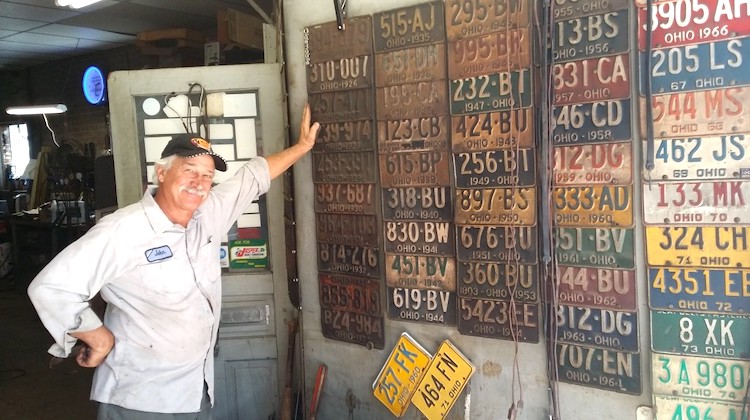
Do you have a plan for how to sell or pass on your auto upholstery shop to a new owner?
“Every business should be run as if it’s going to be for sale,” Karl Stearns wrote in the February 2009 issue of Auto Trim & Restyling News (ATRN).
His advice still rings true, especially for small, family-run shops that don’t have an obvious path to succession.
With the magazine discontinued, we’ve republished the article in full below. It’s full of great tips and advice on how to plan for new ownership.
Planning Your Business’ Succession Strategy Requires Disaster Planning and Keeping Complete Records
By Karl Stearns, ATRN
Running your business every day can be exciting, challenging and fun. Part of your strategy should also include plans for what happens if a disaster strikes, the death of a key owner or employee or simply when it’s time to leave and enjoy the fruits of your labor.
 Every business should be run as if it’s going to be for sale. A business is a valuable asset that should be able to return a good price to its owner. Think of a house. One that is allowed to get run-down will not be an attractive item for a prospective buyer. On the other hand, one that is meticulously maintained will always command a higher price and be easier to sell. Keeping your business in the same condition will make it possible to sell it quickly if you need to.
Every business should be run as if it’s going to be for sale. A business is a valuable asset that should be able to return a good price to its owner. Think of a house. One that is allowed to get run-down will not be an attractive item for a prospective buyer. On the other hand, one that is meticulously maintained will always command a higher price and be easier to sell. Keeping your business in the same condition will make it possible to sell it quickly if you need to.
Disasters are another challenge. Weather-related disasters can devastate a small business. Having a plan of action for protecting business records, relocating if needed and to continue operating can make the difference between staying in business or disappearing.
Although no one likes to talk about it, death is always a possibility. What would happen to your spouse, your children and your employees if you died? Is everything residing only in your head, or on scraps of paper? If so, no one would be able to pick up immediately and carry on. Your planning should include making sure that critical information is shared with those who need to know so they’re not left floundering. All too often, the death of a business owner results in the complete loss of the business that took years to build — perhaps even a lifetime of work.
Another part of strategic planning involves what to do if you lose key employees. Do you rely too much on one person for certain functions? You should be training others in the same job functions so they have at least a partial knowledge of other jobs. In the event an employee suffers long-term illness, dies or leaves you, you aren’t put in a position where you’re struggling to recover.
Planning should also involve what will happen to your business when you’ve decided it’s time to buy that sailboat you’ve always wanted and sail around the world. Cashing out of your business will give you the resources to enjoy retirement or move on to another business venture that attracts you. If you have children, be realistic. Your business may have provided a comfortable life for your family, but are your children really interested in running it? If they’re not, don’t hang on to it as a monument to your success. On the other hand, if they are working by your side and have the desire, then part of your planning should be how you’re going to turn the business over. Certain legal and tax strategies must be employed that will maximize your return while protecting the interests of your children. Another option is to turn the business over to employees. It’s possible to set up that type of ownership transfer well in advance of retirement, but you’ll need to consult good legal and tax advisers to determine the way to go about doing this.
Often overlooked is committing all of this to writing. Just as a business needs marketing and business plans, an employee handbook and standard operating procedures, your disaster recovery and succession plans should be in writing. Critical business records should be backed up on off-site servers. Hard copies should be kept in a place that will protect them from fire and water damage. Anyone who has had a computer crash or a hard drive failure knows what a nightmare it can be to recreate a year’s worth of records. Having them stored safely will aid in recovery, and this should all be part of your operating procedure.
You’ll also need to make sure that your employees, spouse or children will have access to any records that they would need in the event of your death. Something that many small business owners also overlook is simply talking to your family and employees about your plans. For example, if you have children uninterested in the business but have never asked your employees if they would like to take over, you may miss out on a straightforward solution to selling your business.
No one likes to think about many of these matters. However, good strategy includes knowing how to handle life-changing events, both expected and unexpected. Not only will you sleep better, but your business will remain more secure.
After 46 + years in the business I have no one to Carrie it on and am wanting to retire . Any advice , on who might be interested in the business and a tremendous amount of inventory . I have over 500 sets of seats in stock . And so much more !
My name is Jon , from Osborn Auto & Trim 574-722-3382
Thanks